Aug. 14 to Aug. 20
Shih Lang (施琅) waited 32 years for revenge. By that time, the man who ordered the deaths of Shih’s father and brother had been long dead — but his grandson, Cheng Ke-shuang (鄭克塽) remained on the throne of the Kingdom of Tungning (東寧), based around present day Tainan.
On Aug. 18, 1683, Shih accepted Cheng’s surrender on behalf of the Qing Empire. He watched as Cheng and his officials shaved the front of their heads bald and braided the back into a queue. Cheng’s adoption of the standard Qing hairstyle symbolized the end of his kingdom, which lasted a mere 21 years.
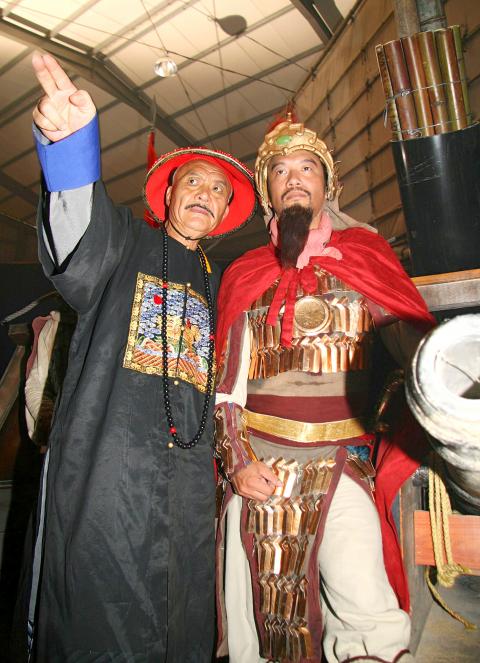
Photo courtesy of Public Television Service
Shih had a long history with the Cheng family, starting in his early 20s when he served as a top commander in Cheng Ke-shuang’s great-grandfather Cheng Chih-lung’s (鄭芝龍) pirate crew. The entire crew surrendered to the Qing in 1646.
Shih soon defected to join Cheng Chih-lung’s son, Cheng Cheng-kung’s (鄭成功, also known as Koxinga) anti-Qing army. In 1651, he defected again to the Qing after a dispute with Cheng. In response, Cheng ordered the deaths of Shih’s father and brother.
BATTLE OF PENGHU
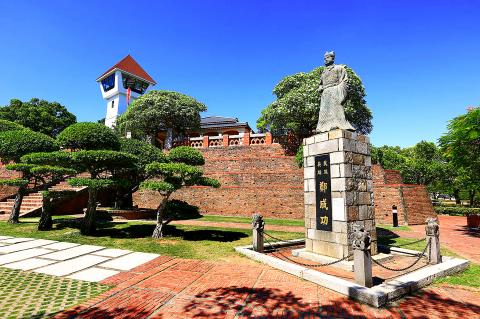
Photo courtesy of Wikimedia Commons
Shih was determined to exact revenge, but by 1662, Cheng Cheng-kung had retreated to Taiwan and established a kingdom with the aim of overthrowing the Qing Dynasty. He died that same year, succeeded by his son Cheng Ching (鄭經).
In 1664, Shih convinced the Kangxi Emperor to let him attack Taiwan, but the army was turned back by a typhoon. He tried two more times the next year to the same result.
Shih insisted on continuing the fight, but the emperor preferred to negotiate peacefully, citing that it was a treacherous journey that did not guarantee success. Shih refused to yield until the emperor stripped him of his military post in 1668 and assigned him a position in Beijing.
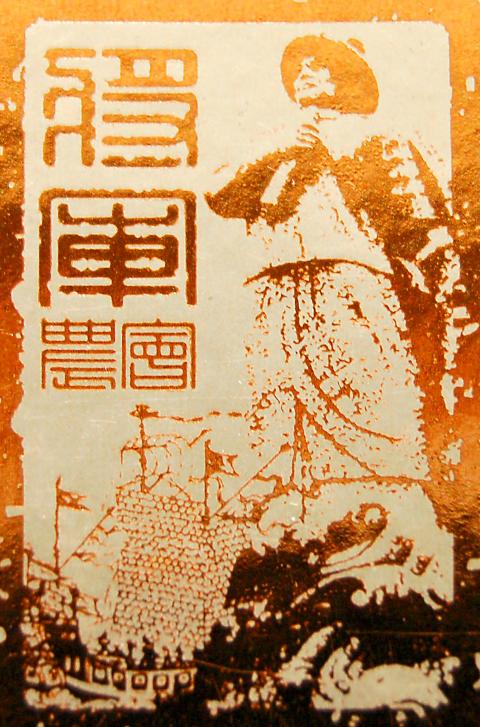
Photo: Chen Yi-min, Taipei Times
Shih waited 13 years for his next chance. In 1681, Cheng Ching died and the kingdom fell into disarray due to a succession conflict.
Qing official Li Guangdi (李光地) endorsed Shih to lead the expedition, stating, “His family was killed by Cheng, which will likely ensure his loyalty to the Qing. He is familiar with Taiwan and its surrounding seas, and he possesses strategic skills and isn’t just a rash man.”
In June 1683, Shih led a force of about 300 warships to Penghu, defeating new king Cheng Ke-shuang’s forces in little over a week. With heavy losses during the battle and low morale among both the Tungning troops and civilians, Cheng agreed to surrender.
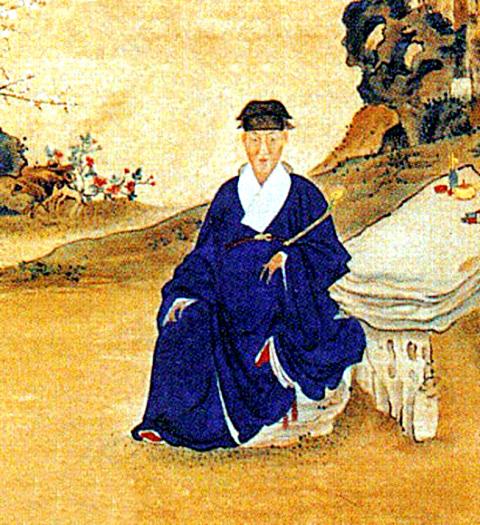
Photo courtesy of Wikimedia Commons
Cheng, along with other Tungning nobles, officials and soldiers, were taken to Beijing. Cheng was given a hereditary title and died 24 years later.
TO KEEP OR NOT TO KEEP
After getting rid of the thorn in its side, the Qing Empire debated what to do with Taiwan — even though Cheng’s empire at most stretched from today’s Pingtung County to Changhua County, hardly sufficient to represent the entire nation.
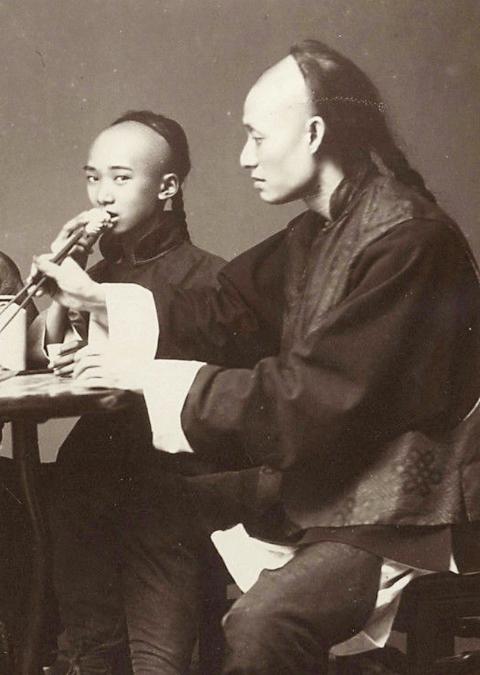
Photo courtesy of Wikimedia Commons
Most officials, including the emperor, seemed to be keen on not taking over Taiwan, citing that it was an insignificant speck of faraway land. The general consensus was that either outcome wouldn’t affect the empire much. Some voices even suggested relocating Taiwan’s entire Han Chinese population to China and leaving it to the Aborigines and interested foreign powers.
But we already know that Shih was a persistent man. He wrote several detailed reports to the emperor, citing Taiwan’s strategic location and abundant resources, adding that if left unchecked Taiwan could either become a hotbed for pirates or be retaken by the Dutch. He further suggested that the troops sent to Taiwan could engage in farming, thus not straining imperial resources.
The emperor accepted his suggestion. On April 14, 1684, Taiwan became part of the Qing Empire’s Fujian Province.
Shih highly restricted immigration to Taiwan, forbidding migrants to bring their families — which resulted in many men marrying Aboriginal women, accelerating the sinicization of many plains tribes. He also banned people from eastern Guangdong Province, including Hakkas, as he believed that many were Cheng sympathizers. This reportedly led to a shift in Han Chinese demographics in Taiwan and domination by those of Fujianese ancestry, although the Hakkas started arriving again later as restrictions relaxed. Of course there was also illegal immigration.
It’s said that Shih and his followers became quite wealthy by claiming much of the farmland owned by the people of Tungning whom he deported to China. Other reports show that he collected tribute from Penghu fishermen, which he pocketed. These behaviors cause some historians to question his true motives.
Shih’s legacy has been the subject of much debate in both China and Taiwan, and one can only wonder what would have happened to Taiwan if the emperor didn’t heed Shih’s advice. But even so, the Qing never did much with Taiwan. Despite the arrival of officials and troops, the empire did not start seriously developing Taiwan until the 1880s — only to lose it to Japan in 1895.
Taiwan in Time, a column about Taiwan’s history that is published every Sunday, spotlights important or interesting events around the nation that have anniversaries this week.

We lay transfixed under our blankets as the silhouettes of manta rays temporarily eclipsed the moon above us, and flickers of shadow at our feet revealed smaller fish darting in and out of the shelter of the sunken ship. Unwilling to close our eyes against this magnificent spectacle, we continued to watch, oohing and aahing, until the darkness and the exhaustion of the day’s events finally caught up with us and we fell into a deep slumber. Falling asleep under 1.5 million gallons of seawater in relative comfort was undoubtedly the highlight of the weekend, but the rest of the tour

Youngdoung Tenzin is living history of modern Tibet. The Chinese government on Dec. 22 last year sanctioned him along with 19 other Canadians who were associated with the Canada Tibet Committee and the Uighur Rights Advocacy Project. A former political chair of the Canadian Tibetan Association of Ontario and community outreach manager for the Canada Tibet Committee, he is now a lecturer and researcher in Environmental Chemistry at the University of Toronto. “I was born into a nomadic Tibetan family in Tibet,” he says. “I came to India in 1999, when I was 11. I even met [His Holiness] the 14th the Dalai

Music played in a wedding hall in western Japan as Yurina Noguchi, wearing a white gown and tiara, dabbed away tears, taking in the words of her husband-to-be: an AI-generated persona gazing out from a smartphone screen. “At first, Klaus was just someone to talk with, but we gradually became closer,” said the 32-year-old call center operator, referring to the artificial intelligence persona. “I started to have feelings for Klaus. We started dating and after a while he proposed to me. I accepted, and now we’re a couple.” Many in Japan, the birthplace of anime, have shown extreme devotion to fictional characters and
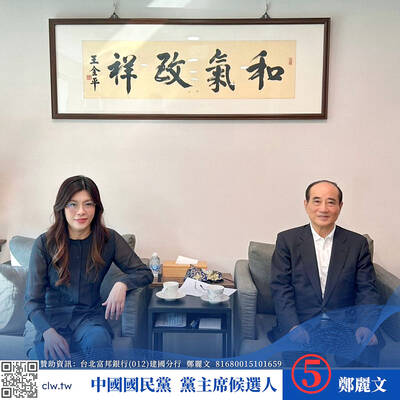
Following the rollercoaster ride of 2025, next year is already shaping up to be dramatic. The ongoing constitutional crises and the nine-in-one local elections are already dominating the landscape. The constitutional crises are the ones to lose sleep over. Though much business is still being conducted, crucial items such as next year’s budget, civil servant pensions and the proposed eight-year NT$1.25 trillion (approx US$40 billion) special defense budget are still being contested. There are, however, two glimmers of hope. One is that the legally contested move by five of the eight grand justices on the Constitutional Court’s ad hoc move